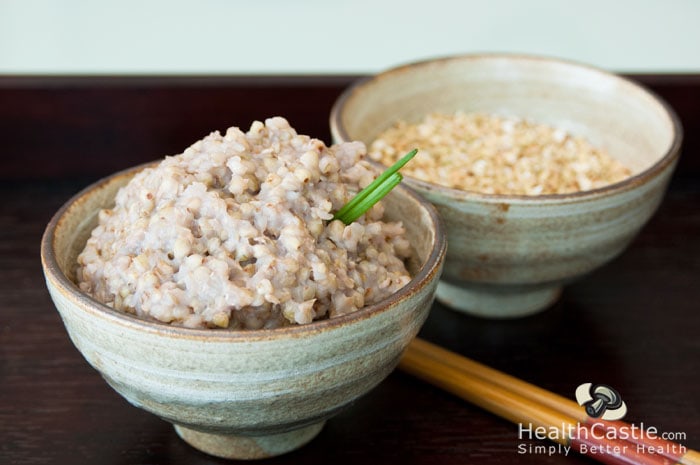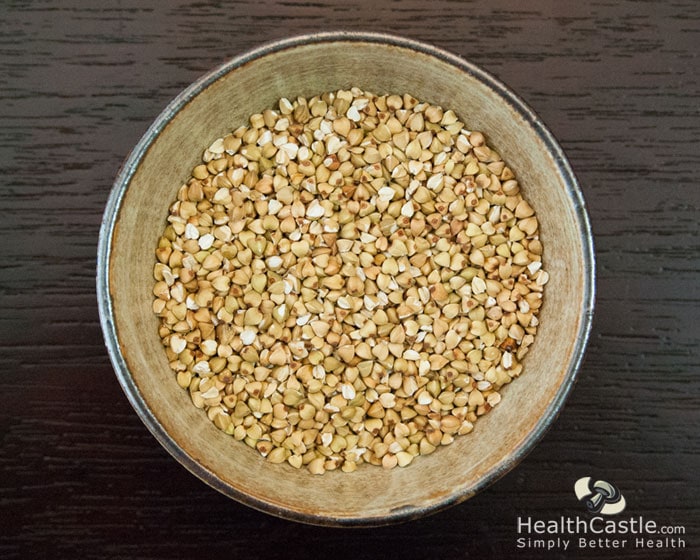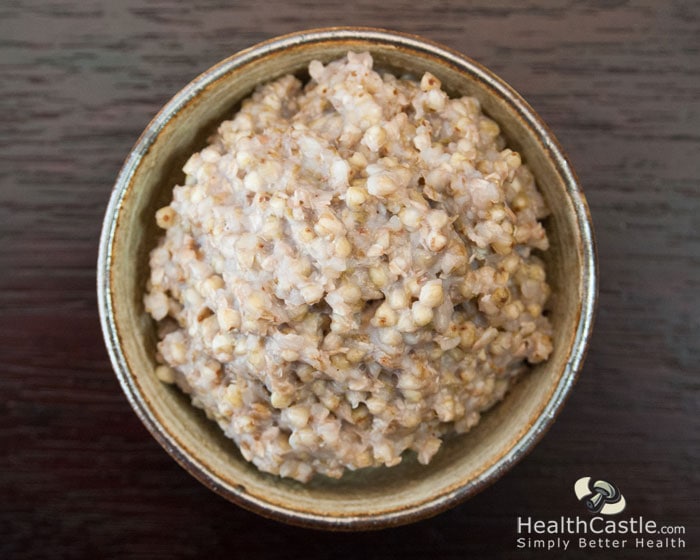
Written By: Sofia Layarda, MPH
Title: Master of Public Health
Alumni: University of California, Berkeley
Last Updated on:


This month’s whole grain is one with many names. Buckwheat can be called buckwheat groats, buckwheat grits, kasha, or simply buckwheat. The uncrushed grains are shaped like tiny pyramids. It is popular in Eastern European cuisines, where it is crushed and cooked into side dishes or breakfast cereal. In France, where it is often used in crepes or pancakes, it is called sarrasin. Despite the name, buckwheat is not technically a “wheat” or cereal crop; rather, it is related to rhubarb. This means buckwheat is gluten-free.
Table of Contents
When it comes to buying buckwheat, the different names and appearances give you clues about the amount of processing it has undergone.
To use buckwheat in your meals, choose either the raw groats or kasha. Kasha will take slightly less time to cook because it has been toasted.
Starting Amount: 1/2 cup raw

Pre-Soaking Requirement: No
Pre-Rinsing Requirement: No
Cooking Liquid: 1 cup water
Cooking Time: Place in a pot with water, bring to a boil, then turn heat down to low and simmer undisturbed with cover on until tender. Kasha will take 15 to 20 minutes (it took us 18 minutes), while the raw groats will take slightly longer (20 to 30 minutes).
Resulting Yield: 1 1/3 cups cooked

Nutritional Information (1/2 cup cooked buckwheat):
Gluten-free: Yes
Alumni: University of California, Berkeley – Sofia believes in bringing back fun and pleasure into everyday eating. She loves cooking, and is constantly experimenting with ingredients, creating recipes and trying them out on family and friends. Her latest interest lies in finding realistic and practical ways of environmentally-friendly food/eating habits.
buckwheat, gluten free, home cooking, how to cook, vegetarian, whole grains
Seven Tools to Create Your Own Cookbooks This Holiday
5 Steps to Make it Through Thanksgiving Without Fat-Free Products